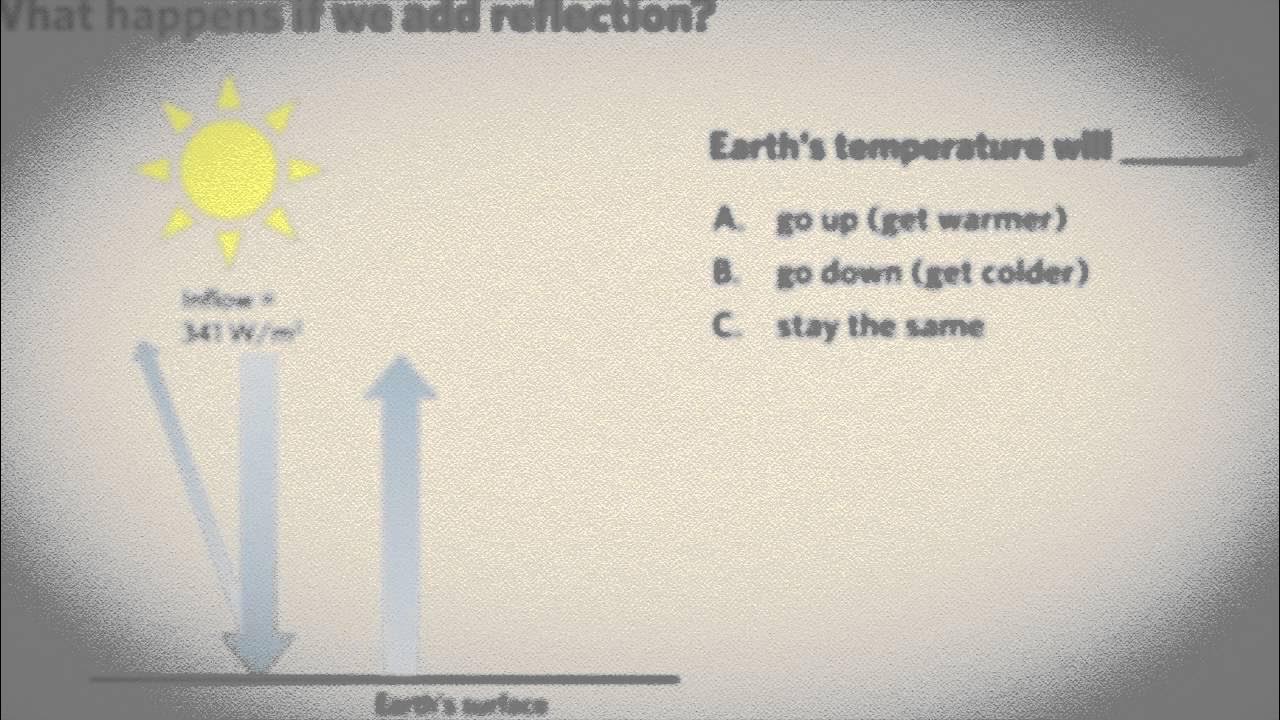How NASA Satellites Help Model the Future of Climate
Summary
TLDRThis video explains the critical role of climate models in understanding the complex, interconnected systems of our changing climate. Using data from satellites like NASA's Global Precipitation Measurement Mission, climate scientists improve models to predict the impacts of climate change on weather patterns, rainfall, and droughts. These models, though always evolving, help guide decisions about future climate scenarios. The video highlights the importance of continuous observation and data assimilation to refine predictions, emphasizing the need for long-term, accurate records to better understand how the Earth's atmosphere, land, and oceans are changing over time.
Takeaways
- 😀 Climate change affects not only temperature but also soil moisture, cloud cover, and rainfall patterns.
- 🌍 Understanding climate change involves studying complex, interconnected systems on a global scale.
- 📡 Climate scientists like Kate Marvel use satellite data to improve the accuracy of climate models.
- 🧭 Climate models help predict future climate scenarios, including impacts on hurricanes, fire seasons, and agriculture.
- 🌱 Climate change is making wet regions wetter and dry regions drier, shifting large-scale weather patterns.
- 🌧️ Satellites like NASA's Global Precipitation Measurement (GPM) mission provide valuable rainfall data crucial for climate models.
- 🔍 Data assimilation combines various Earth observation sources to improve climate models and their accuracy.
- 🌀 Climate models undergo continuous testing and refinement to ensure their reliability in predicting climate impacts.
- 🧪 Climate models are inherently imperfect but useful for making decisions about future climate scenarios.
- 🚀 New satellites and the NASA Earth System Observatory will expand capabilities to monitor Earth’s changing climate over time.
Q & A
Why do humans care about climate change beyond temperature changes?
-Humans care about climate change because it affects various factors that are essential for life, such as soil moisture, food production, rainfall patterns, cloud cover, and the risk of droughts, which can significantly impact ecosystems and human societies.
How do climate scientists like Kate Marvel use satellite data?
-Climate scientists, like Kate Marvel, use satellite data to improve climate models by collecting valuable information on Earth's systems, which helps predict the impacts of climate change, including temperature shifts, rainfall, and extreme weather events.
What are climate models and why are they important?
-Climate models are mathematical simulations used to predict how Earth's climate will evolve in the future. They are important because they help us understand the effects of different emissions scenarios, guide decisions on where to live, and provide insights into future weather patterns, including hurricanes and fire seasons.
How do climate models predict future conditions without direct observations from the future?
-Since direct observations from the future are not available, climate models use our best understanding of physics, chemistry, and Earth's systems to simulate the effects of different emissions trajectories and policy scenarios, offering insights into potential future conditions.
What challenges do climate models face when predicting local weather phenomena?
-Climate models face the challenge of accurately predicting local weather events, such as cloud formations and rainfall, at smaller scales. They need to account for complex interactions within the atmosphere, which is a more difficult task as models become more precise and cover smaller areas.
How does climate change affect wet and dry regions differently?
-Climate change is expected to make wet regions wetter and dry regions drier on large scales. However, the exact locations of these shifts are influenced by changes in atmospheric circulation patterns, meaning the specific areas affected by these changes can vary.
What role do satellite data play in developing accurate climate models?
-Satellite data plays a crucial role in developing accurate climate models by providing long-term, reliable observations of Earth's systems, including atmospheric conditions, ocean temperatures, and land changes. This data helps validate and refine climate models to ensure they reflect reality.
What is data assimilation and how does it improve climate models?
-Data assimilation is the process of integrating various sources of Earth observation data into climate models to enhance their accuracy. This method helps refine predictions by improving the representation of real-world conditions, such as storm intensity and location.
Why are climate models tested repeatedly?
-Climate models are tested repeatedly because they are never perfect. While all models have limitations, testing ensures they are useful by capturing important aspects of Earth's system and providing reliable predictions for future climate conditions.
What is the significance of NASA's Earth Observation Fleet in climate research?
-NASA's Earth Observation Fleet is vital for climate research because it provides a long-term, accurate record of global climate data. This data supports the development of climate models and helps track various variables, such as temperature, precipitation, cloud cover, and soil moisture, which are crucial for understanding climate change.
Outlines

هذا القسم متوفر فقط للمشتركين. يرجى الترقية للوصول إلى هذه الميزة.
قم بالترقية الآنMindmap

هذا القسم متوفر فقط للمشتركين. يرجى الترقية للوصول إلى هذه الميزة.
قم بالترقية الآنKeywords

هذا القسم متوفر فقط للمشتركين. يرجى الترقية للوصول إلى هذه الميزة.
قم بالترقية الآنHighlights

هذا القسم متوفر فقط للمشتركين. يرجى الترقية للوصول إلى هذه الميزة.
قم بالترقية الآنTranscripts

هذا القسم متوفر فقط للمشتركين. يرجى الترقية للوصول إلى هذه الميزة.
قم بالترقية الآن5.0 / 5 (0 votes)






